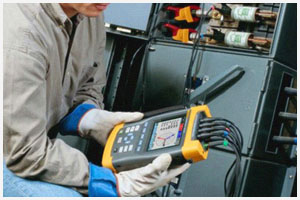
Grounding is the connection of the body of the device to the earth by establishing a conductive connection between the devices and the earth, for reasons such as insulation failures in the devices. In this way, there is no problem for humans because the fault current will flow into the soil. If no earthing is present, measurement events may occur depending on the level of this current, since fault currents will flow through the person touching this device.
Therefore, by means of grounding, the leakage currents are directed to the earth safely and if they are connected with an automatic opening system, the electrical system is safely interrupted. For this reason, proper grounding is not only important in terms of protecting people's lives, but also vital in terms of protecting devices and investments.
Grounding measurement is the name of the process for measuring the grounding value of a building. As a result of this process, a grounding report is prepared. Grounding measurement is a study carried out by technically qualified persons who have electrical engineering education and have a grounding certificate.
Before starting any grounding resistance measurement, the maximum acceptable level of grounding resistance must be calculated. Grounding resistance levels may vary according to the standards and type of grounding that countries follow. When the earth is exposed to an electric current, its response to this current is called earth resistance. Grounding measurements are also made to measure this resistance.
Earth is a much weaker conductor than copper and similar normal conductors. However, if the soil area is large enough for the electric current, the resistance of the soil as the electric current passes decreases and the soil becomes a good conductor. In this regard, grounding measurements must be made before a plant is installed. When the subject is electrified, the conductivity and resistance direction of the soil draws attention.
The resistivity of the soil is measured on the basis of the resistance of one cubic meter of soil. The value of this resistivity is directly related to the structure of the soil and the water content in it. The resistance of an electrode to earth depends on this resistivity of the earth. In marshy, clay soil or damp gravel, this resistance is low, but on a stony ground the resistance is much higher.
Insulation of conductors against earth is measured by using earth resistance testers (earth megeri), while insulation of conductors against each other is measured using insulation test devices (megat). All measuring instruments (megers) are a specially produced portable ohm meter. Measuring soil resistance with these tools gives simple, precise and reliable results.
Situations such as adding modern computer-controlled equipment to plants also grow in electrical noise. Old equipment can cause electrical noise because it cannot adapt to new equipment. This is considered one of the factors affecting soil resistance. At the same time, as a result of laying non-metallic pipes and ducts underground, systems affect safety in terms of low ground resistance. Another factor is that the soil is moist.
In short, ground electrode and grounding systems are important elements for providing security in factories, production facilities and buildings. If there is no earth electrode in the system, the safety of people is in danger and the machinery and equipment may be damaged.
Fault currents can flow through a person touching an ungrounded machine or equipment and measurement events may occur depending on the power of these currents. But the ground electrode alone does not provide life safety. Regular measurements are essential to ensure safety.
For more information, you can reach our expert team from our contact addresses and phone numbers and you can get answers to all your questions.